 April
11
April
11
Tags
Finding the Field
The NGV need me. Well not me per se, more us. They need our help bless.
‘Do you have a pioneering abstract artwork hanging in your rumpus room or stacked in the garage?’ the NGV pleads via an expensive video callout, infomercial promo-thingo. Riffing off the incredibly popular formula of Antiques Road Show, the NGV marketing department is running amok, they love a good narrative. So the uninformed, working class proletariat who doesn’t know what has value and what doesn’t, seek advice from the private school educated art-class connoisseur/experts. Turns out the art that was about to be put on next month’s hard rubbish pile is in fact an unattributed museum quality piece, by an obscure but highly influential member of Australia’s hard edge abstractionist avant-garde movement of the late 60’s. It is thus of unimaginable value and the NGV need to borrow it. They might even need to acquire it (that’s buy it in art talk). Us bogans just hit the jackpot. Entering the canon is a messy and expensive business.
‘In 1968 the NGV Opened The Field, a radical showcase of Australian abstract and colour field art. It lives on to this day as one of the most influential exhibitions in Australian Art History. To celebrate its 50th Anniversary the NGV will restage the exhibition in 2018. We’re determined to track down as many of the original works as we possibly can. We’ve only got one chance to do this properly’, says Director Tony Ellwood with an understandable urgency given the historical importance the NGV places on art made by white men. ‘We would love to get as much support as possible to find these missing works’. The ‘missing works’ at the NGV are works made by anyone other than a white man. But I don’t think that’s what they mean. The Field includes work by 40 artists, just 3 of whom are not white men. A big shout out to the female artists who did make the Field: Janet Dawson, Wendy Paramor and Normana Wight. Clearly you were shoveling shit up hill to get into this #cockfestfield.
By restaging the exhibition 50 years on, we hope to re-examine its impact and significance in Australian art history and allow a whole generation to experience it for themselves,’ says Tony Ellwood, NGV Director.
Radical old ideas are back in vogue. Why be progressive when you can choose regressive? What are the politics of re-staging an old show as it was and ignoring the current conversation about diversity and inclusivity? Hasn’t anything changed since 1968?
Before being shafted by the Museum of Contemporary Art, Los Angeles recently, curator Helen Molesworth said: ‘Most museums still maintain a commitment to an idea of the best, or quality, or genius. And I’m not saying I don’t agree with those as values. But I think those values have been created over hundreds of years to favour white men. One of the things you have to say as a curator is ‘We are not going to present the value that already exists; we are going to do the work to create value around these woman artists and artists of colour that would just come ‘naturally’ to the white male artist. The only way you get diversity is to actually do it. That means that certain men don’t get art shows. There are only X number of slots every year on the calendar and the number of artists always exceeds the number of slots. If you are going to be equitable, some of the dudes don’t get shows that year. That’s what’s hard about it.’
Can the NGV headhunt Helen Molesworth?
By dragging the past into the present, without adding work from the many artists working in hard-edged abstraction today, the NGV are perpetuating white man’s historical stranglehold over culture. They’ve doubled down on the omission of women and artists of colour from the fields of minimalism and abstraction.
I’m bored with white men, I’m bored of how they dominate the public discourse then pretend they’re not. They’re over-exposed. I’m so bored that when I meet a white man over a certain age wearing a suit I just assume he has latent misogynistic tendencies until he proves otherwise. It saves me time. We’re all on the clock here people. It’s like Tony Elwood said: “We only get one chance at this!” Speaking of time, there’s still to this day never been a Director of the NGV who wasn’t a white man. They wait us out, let the clock run down and we lose our puff. White men hope to God the link between yesterday’s firebrands and tomorrow’s don’t align and there you go: you’ve effectively given white men another 20-30 years of dominance. Of defending the patriarchal construct and being the status quo. The under-exhibited, under-commissioned, under-valued, under-discussed, under-collected, under-canonized work of everyone who isn’t a white man: When does that work get to join the field?
If 37 members of any other group were in a show, then that’s what the art show would be about. White men get to make art about anything they want, anyone who isn’t a white man is ‘the other’, and gets typecast into making art about what it’s like not to be a white man. How sick is that?
The Field Revisited is accompanied by a reprinted version of the rare and highly collectable 1968 exhibition publication. We all simply must buy it and read it. I’ve read it and it hurt. Every single word was written by a white man. In his essay for this publication, Patrick McCaughey assumes the ‘watcher’, the audience is male too: ‘Every work, however, does demand from the watcher his participation. He participates not through trying to read the artist’s state of mind or to make the shapes, forms and configurations into familiar images’.
McCaughey quotes Clement Greenberg that giant of white man thinking: ‘Art is a matter strictly of experience’ said Clement. But who’s experience do we see? Mens. The all male writing team, name drop an all male team of international art-stars: Leger, Magritte, Mondrian, Frank Stella, Matisse, Pollock, De Kooning, Kline, Albers, Malevich, Rodchenko, Tatlin and El Lissitzky. Local man art-stars referenced are John Olsen, Ralph Balson, Brett Whiteley, Roger Kemp and Roger Klippel. White men love talking about white men. Mad for it they are. God is a white man (I fact checked with Morgi). To these guys the whole friggin’ world is a white man, a god-like white man who loves staring in the mirror and is yet to check his privilege. And what does the NGV do with the white-man-washing from 50 years ago? Restage it all over again and get excited about it. Then try to get us excited about it! Isn’t this like against the law or something?
There was one sentence in The Field catalogue that is worthy of a reprint. Elwyn Lynn wrote: ‘Monumentality has come to look pretentious’, an observation one wishes the curators of the inaugural NGV Triennial had taken on board prior to their selections. Elwyn’s words are as fresh now as the day they were written and still resonate. Seldom outside the current death throes of the Hollywood Industrial complex, do we bear witness to such pointless and vacuous excess shrouded within the idea of entertainment. How can artworks so large mean so little? A pomposity of scale triumphs over substance in much of the work at the NGV Triennial, the prevailing raison d’ etre seems to be to fill a space physically, but say as little as possible. Which is no small feat.
The NGV Triennales curatorial framework centers round a haiku-like framework of words: Movement, Change, Body, Time and Virtual. Any biennial or triennial aspires to be an intellectual event, but this is one trend the inaugural NGV Triennial isn’t following. Reminiscent of the populist but provocative TV show ‘Are you smarter than a 5th Grader?’, the curatorial premise of this behemoth signals that the popularity of institutional Children’s programming has spilled out from the kids rooms into the Gallery proper. The NGV most definitely does not over estimate the capacity of its audience to think beyond the obvious. I like kids as much as much as the next parent of a teenager who discovered the word Hypocrite last school holidays, but don’t you reckon it’s remiss of a Museum to dumb shit down to this extent?
This take down by Giles Fielke is on the money: https://www.memoreview.net/blog/triennial-at-ngv-international-by-giles-fielke
Maura Reilly’s new book Curatorial Activism: Towards an Ethics of Curating is a must-read, and introduces us to the idea of dangerous idea of Curatorial Malpractice (‘malepractice’ ha ha).
http://www.artnews.com/2017/11/07/what-is-curatorial-activism/
‘Each has dedicated their curatorial endeavours almost exclusively to visual culture in/from the margins—that is, to artists who are non-white, non-Euro-American, as well as women, feminist, and ‘queer’-identified artists. These curators have committed themselves to insurrectionist initiatives that are levelling hierarchies, challenging assumptions, countering erasure, promoting the margins over the centre, the minority over the majority, as well as positing curatorial “strategies of resistance,” provoking intelligent debate, disseminating new knowledge, which, in the end, offers up signs of hope and affirmation.
If you don’t believe that the art world is sexist and racist, it’s time for you to come out from under your rock. Current statistics demonstrate that the fight for equality in the art world is far from over. Despite decades of postcolonial, feminist, anti-racist, and queer activism and theorising, the art world continues to exclude Other artists—women, non-white and LGBTQ artists. This discrimination invades every aspect of the art world, from gallery representation, auction-price differentials, and press coverage to inclusion in permanent collections and solo exhibition programs.’
American cultural theorist Lucy Lippard came to Melbourne in 1975, as part of celebrations for International Women’s Year. Lesley Dumbrell was showing Lucy around and took her to Pinacotheca Gallery, Melbourne’s highly regarded centre for abstract and minimalist art. When Director Bruce Pollard invited Lippard to view the stock room, she explained she was interested in only seeing women artists. Pollard took umbrage and (as Dumbrell recalls) Lucy ‘gave him a serve’ and then walked out. The story went round the art world like wildfire. Lippard said to Dumbrell, ‘You know all these women artists. Why don’t you interact with them more? This is absurd. Things will only change if you stick together.’
https://www.youtube.com/watch?v=m1xMk3N-wgw Lucy Lippard 12.30mins, ‘Look at us, clutching onto these phallic symbols (microphone). Artists can do whatever they want. Artists support the status quo.’
Lucy Lippard’s later talk at the George Paton Gallery ‘highlighted the scarcity of knowledge about women artists in the history of art and the paucity of their inclusion in both historical and contemporary exhibitions’. Men weren’t allowed to attend Lucy Lippard’s talk. They skulked in the foyer like over-indulged toddlers. Lucy’s address motivated women here, (Erica McGilchrist, Lesley Dumbrell, Kiffy Rubbo and Meredith Rogers thank you) to establish the Women’s Art Register. The primary function of the Women’s Art Register is to archive the work of female artists so institutions that historically and routinely leave us out can’t pretend we weren’t here. For 43 years, volunteers (too many to mention here) have worked tirelessly to catalogue and archive the work of female artists.
‘The Women’s Art Register is Australia’s living archive of women’s art practice (non-binary and trans inclusive) and a National Artist-Run and Not-for-Profit community and resource. Assessed as a ‘Collection of National Significance’ through the Heritage Collection Council in 2009, this unique archive houses the images, catalogues, posters and ephemera of over 5000 Australian and International artists. Since 1975 the Women’s Art Register has provided an inclusive, independent platform for research, education, advocacy and support for it’s members and the Arts and Education sectors, enhancing the status of women artists and addressing issues of equity, professional practice and cultural heritage.’
The NGV has never hosted an exhibition delving into feminism. The Women’s Art Register is more culturally significant than The Field. The NGV are into anniversaries, will it in 2025, host an exhibition to celebrate the 50th Anniversary of the founding of The Women’s Art Register? That is a bloody good idea. Have it for free.
‘I don’t want to hear “going forward” ever again’ said my friend Bruce Mowson on Facebook, and we liked and laughed. We’re not buying the ‘going forward’ spin anymore. Everyone with half a brain, knows we’re going ‘round and ‘round in circles. Sometimes you’ve got to go backwards to go forwards and sometimes it’s just going backwards. Restaging The Field, as is, 50 years after the fact shows us nothing, teaches us nothing except perhaps that: ‘When it comes to silencing women, western culture has had thousands of years of practice.’
Mary Beard.

Women in Art Forum

Women’s Art Registry

Archives

Women’s Art Register

History

Slides

Archiving

David Aspden

Sydney Ball

Tony Bishop

Peter Booth
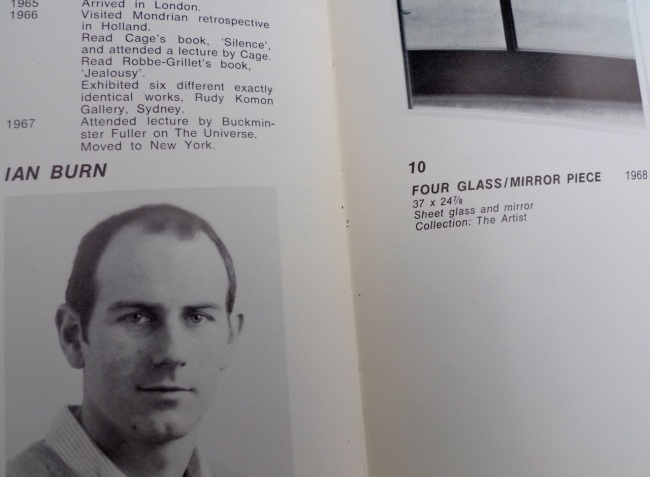
Ian Burn

G.S. Christmann

Tony Coleing

Janet Dawson

James Doolin
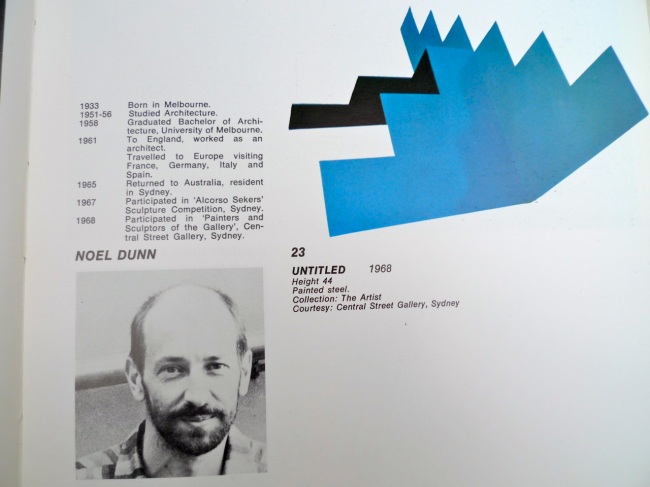
Noel Dunn

Garrey Foulkes

Dale Hickey

Robert Hunter

Robert Jacks
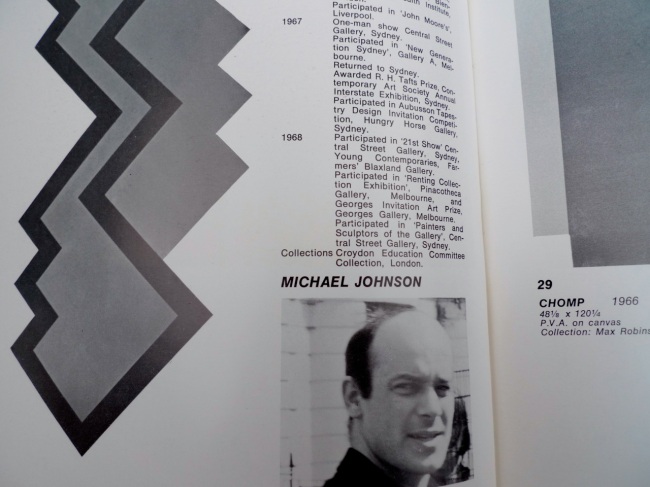
Michael Johnson

Col Jordan

Michael Kitching

Alun Leach-Jones

Nigel Lendon

Tony McGillick
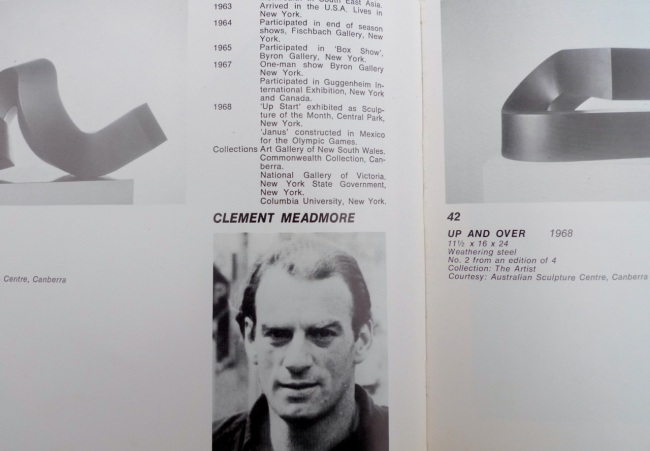
Clement Meadmore

Michael Nicholson
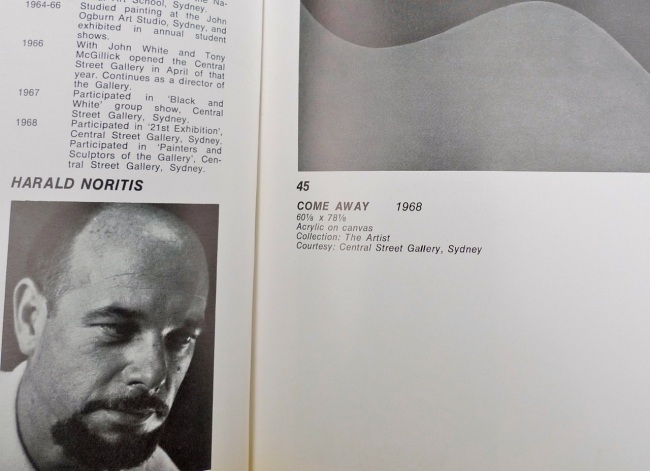
Harald Noritis

Alan Oldfield
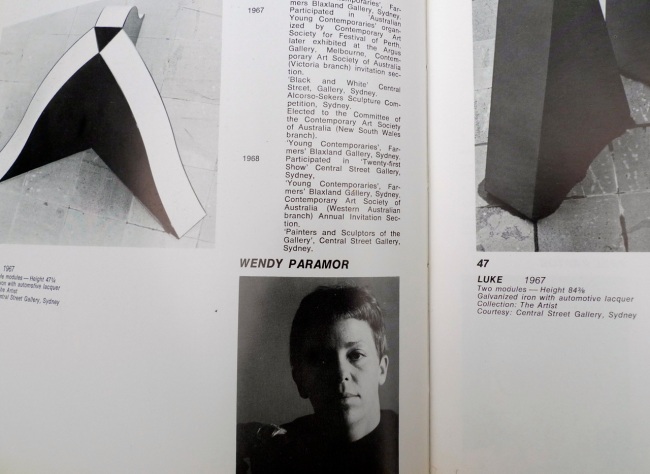
Wendy Paramor

Paul Partos

John Peart

Emanuel Raft

Melvyn Ramsden

R.C. Robertson-Swann

Robert Rooney

Rollin Schlicht

Udo Sellbach

Eric Shirley
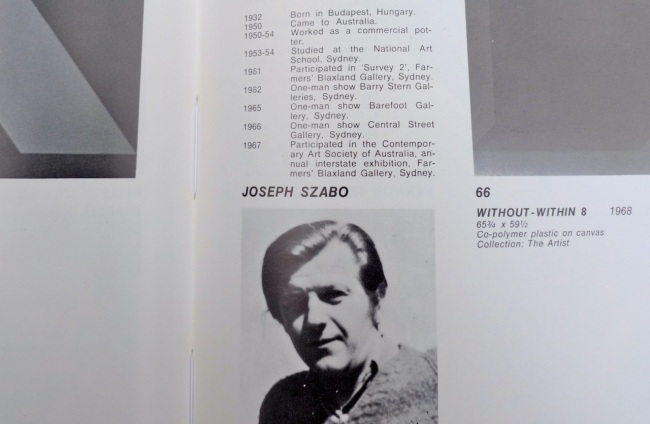
Joseph Szabo

Vernon Treweeke

Trevor Vickers
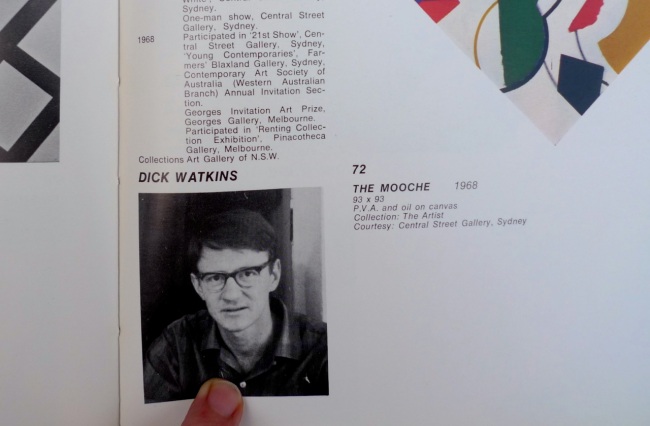
Dick Watkins

John White

Normana Wight

Private/Public Partnership deals

Royston Harpur quotes some pretty big names, who are accidentally all men

The boys referencing the boys

Breakthroughs, Revolutions, Pending Triumphs: Patrick McCaughey is almost excited

Clement Greenberg quote

Lawrence Alloway catalogue essay

love your work natty thomas! gb
LikeLike
even the shoes: http://www.perditaphillips.com/the-field-2/
LikeLike
Pingback: Lisa Sharp: Orbiting ‘The Field’ – Instantloveland
Pingback: SHEILA Foundation | VANGUARDIST OR VAMPIRE? Rethinking Cynthia Reed Nolan’s contribution to Australian culture